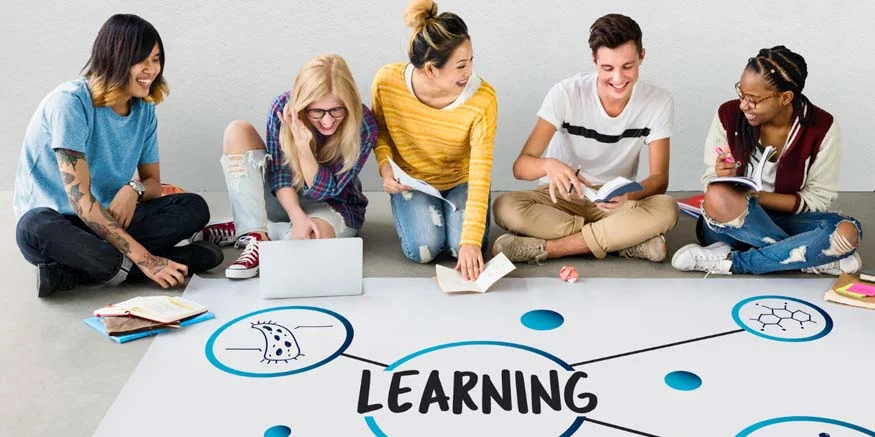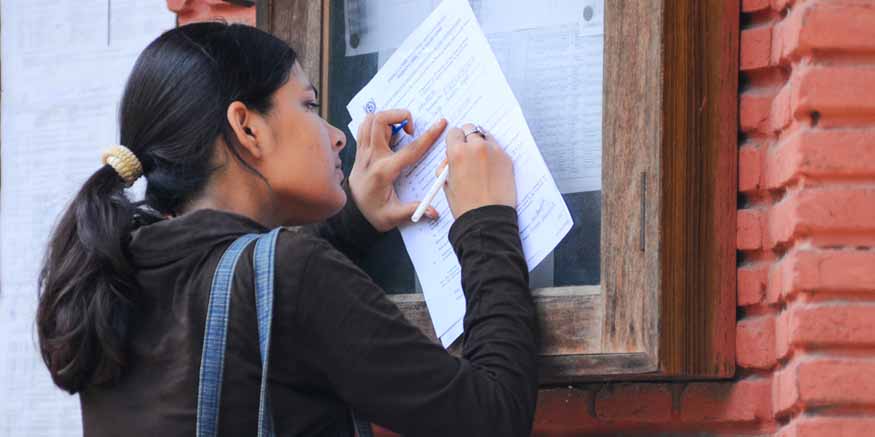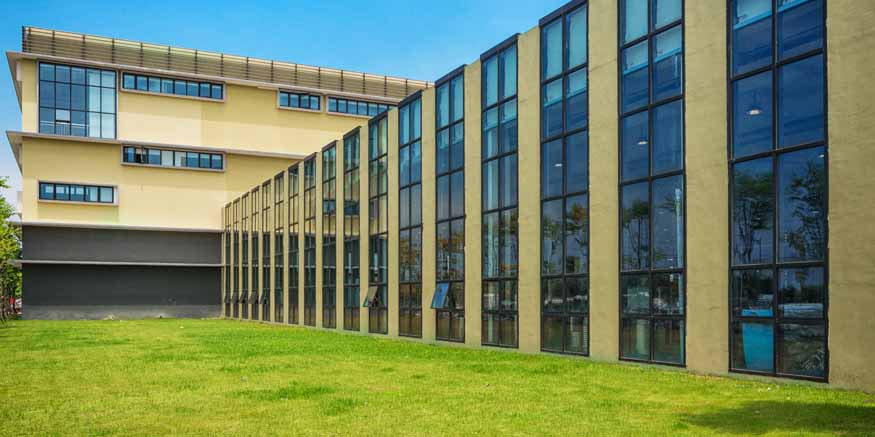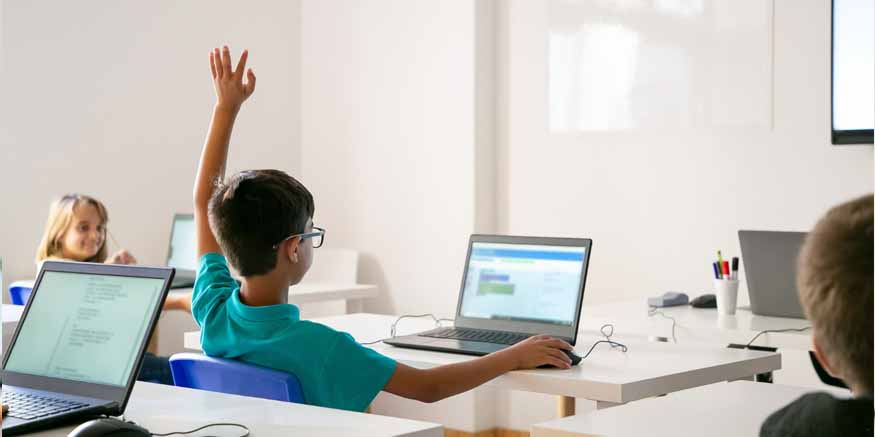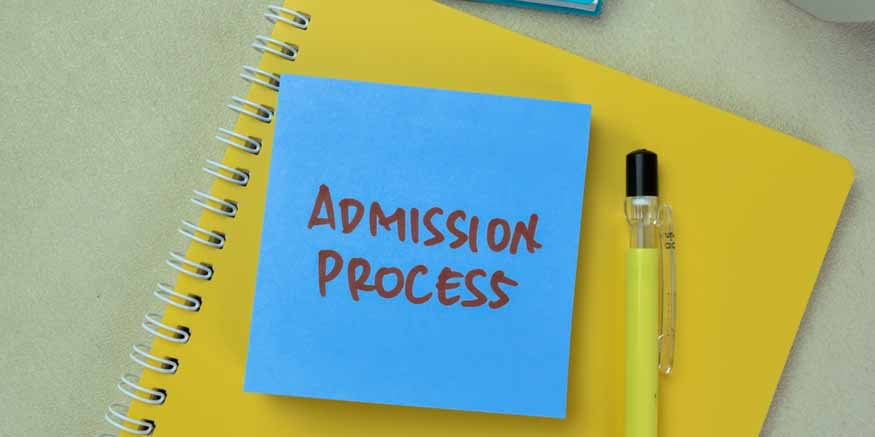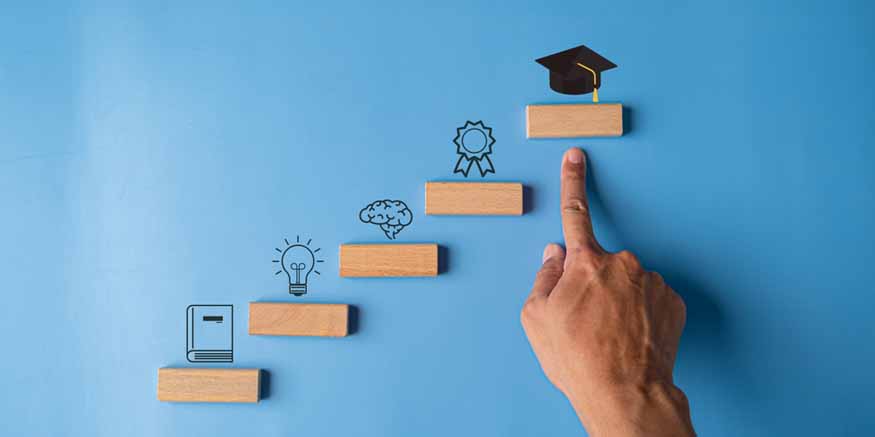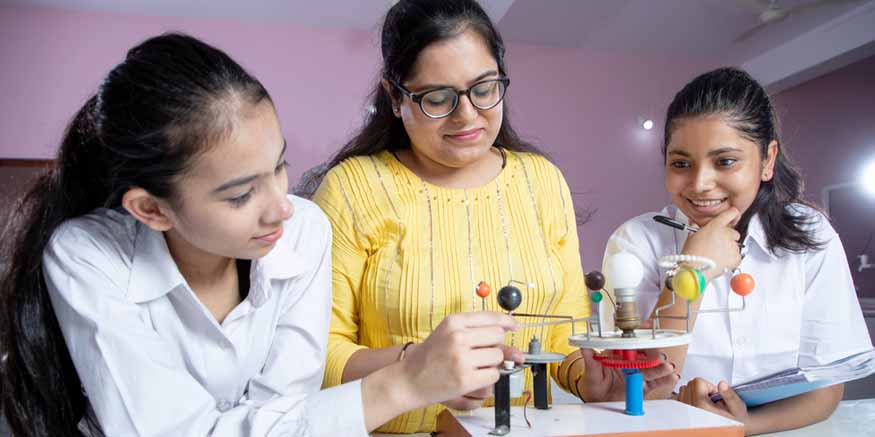Experiential learning emphasises acquiring knowledge through real-life experiences, promoting effective learning that involves reasoning, creativity, teamwork, and practical application, rather than relying solely on theories. Instead of simply memorising a few definitions of environmental science, when students participate in a team project such as a community clean-up campaign, their foundational understanding of waste management allows them to apply their knowledge more effectively to the task at hand. Such experiences enable students to connect classroom teachings with real-life situations, even later in their lives.
The renowned David Kolb, through his theory of experiential learning, presented a model outlining the stages of learning:
- Concrete Experience, where the learner engages in an activity directly.
- Reflective Observation, where the learner analyses the experience and reflects on what occurred.
- Abstract Conceptualisation, where concepts are formulated by the learners as a result of their reflections.
- Active Experimentation, where the learner applies new ideas in different contexts.
Now, let’s return to our example of the clean-up drive. Once the activity is complete, students can write about their impressions, share their observations, and, if possible, suggest actions to protect the environment or remediate the damage caused. This cyclical process helps them retain and transfer the knowledge they have gained.
Steps to Implement Experiential Learning
- Identify Learning Objectives
- Create Engaging Activities
- Foster Reflection
- Encourage Teamwork
- Measure Learning Through Assessment
The first step in engaging learners in experiential learning is to clearly define the aim of the exercise. Determine what students are expected to know or accomplish by the end of the experience. For instance, if the objective is to improve students’ understanding of environmental science, the content could focus on waste management, emphasising sustainable practices.
Once the objectives are set, design contemporary, practical activities that will help achieve these goals. Activities should be relevant to students’ daily lives and demonstrate the real-world applicability of knowledge. For example, a school might promote responsible practices by having students create a music video supporting a school-wide recycling initiative.
Reflection is a key element of experiential learning. Encourage students to express their thoughts and share their experiences with others through group discussions, reflective journals, or presentations. This enables learners to integrate their experiences and identify the connection between theory and practice. For instance, students could articulate their understanding of waste management and discuss the skills they developed while working on the recycling campaign.
Experiential learning thrives on collaboration. Group activities enhance social learning, as students learn from one another. For example, in the context of renewable energy, students might work in teams to research and propose renewable energy solutions for the school, fostering teamwork and the appreciation of diverse perspectives.
Assessment in experiential learning requires a tailored approach. While traditional exams may be useful in some cases, they may not effectively capture the depth of learning that occurs through hands-on activities. This is an area that needs careful consideration.
For example, students could compile a portfolio showcasing their work and learning over time, followed by a presentation. Alternatively, peer evaluation can provide insights, allowing students to assess each other’s contributions and performance in assignments.
Many studies support the benefits of experiential learning in enhancing educational outcomes. For instance, a study published in the Journal of Educational Psychology revealed that students engaged in experiential learning demonstrated improved critical thinking skills and better retention of knowledge compared to those who followed traditional learning methods. Similarly, research by Topping and Trickey (2014) found that pupils involved in service-learning projects, a form of experiential learning, showed increased civic engagement and empathy towards others.
Conclusion
In summary, experiential learning is an excellent approach to improving students’ academic performance and engagement in extracurricular activities. It allows educators to set clear goals for lessons, design engaging activities, and assess the knowledge and skills gained from hands-on participation. Moreover, recent studies have shown that students can retain up to 75% of material through hands-on learning, compared to only 5% through traditional lectures. This alone makes experiential learning a compelling choice for the future of education!

